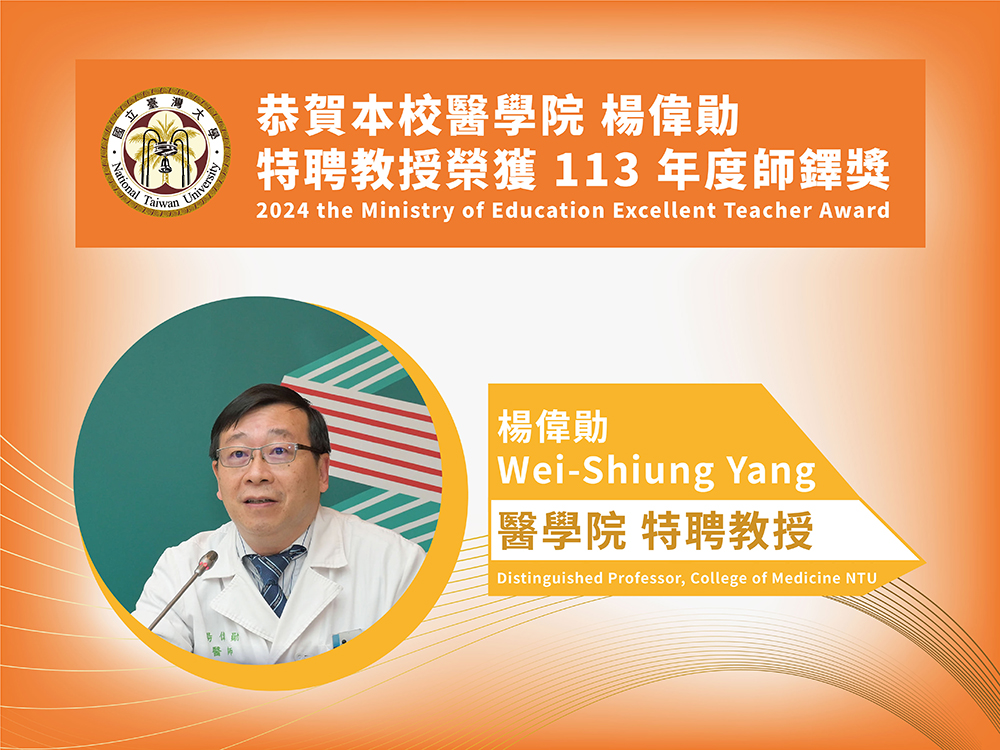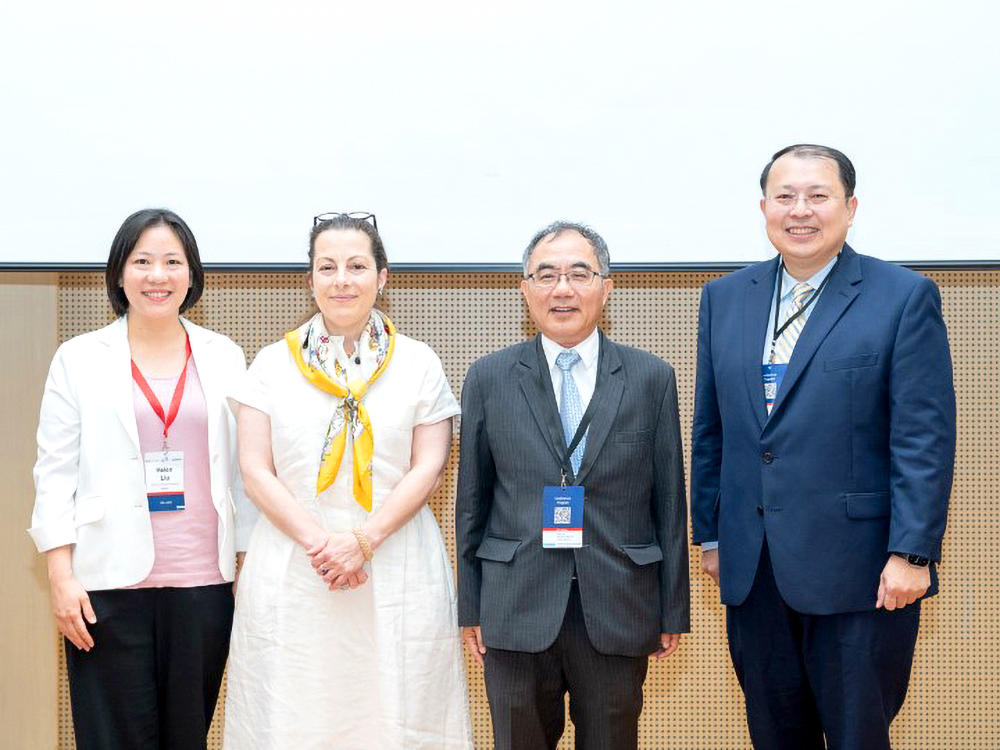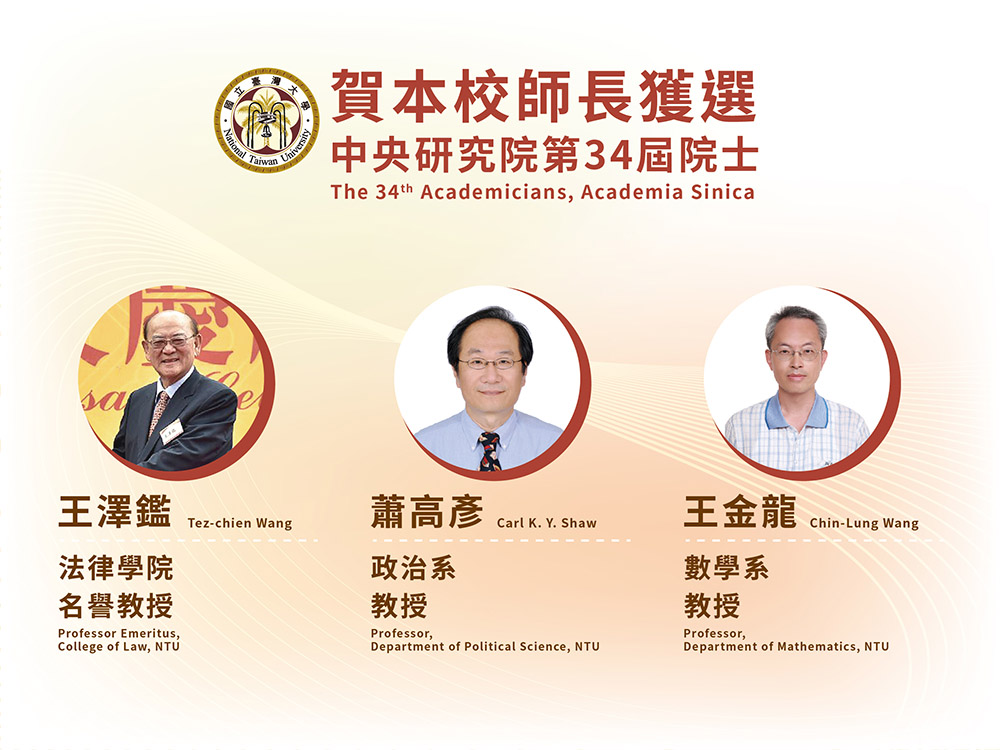
NTU Opening Ceremony: “Where Creativity and Dreams Take Flight”
瀏覽器版本過舊,或未開啟 javascript
請更新瀏覽器或啟用 javascript
Spotlights
A cosmic 3D map based on about 700,000 objects from this data release. The sky area covered by this map is only about 1% of the final map produced by DESI. A movie showing this 3D map can be found at https://www.youtube.com/watch?v=xdJWHXJCxpE&t=2s&ab_channel=BerkeleyLab (Credit: David Kirkby/ DESI collaboration).
Prof. Lan (third left in the back) and Prof. Cooper (fourth left in the back) along with their research team members. The background image is the Mayall Telescope, where the DESI is located. (Credit: Marilyn Sargent, UC Lawrence Berkeley National Laboratory).
Over the last 30 years, astronomers have discovered that our universe is not only expanding, but the expansion is getting faster and faster! This speeding up is one of the great mysteries of modern science. It can’t be explained by any known physics. Scientists call this cosmic question mark “Dark Energy.”
To learn more about Dark Energy, hundreds of scientists and engineers from more than 70 institutions around the world have come together to build a powerful new device called DESI, the Dark Energy Spectroscopic Instrument, and installed it on the Mayall Telescope in Arizona. By 2025, DESI will make the largest ever 3-D map of the universe by observing more than 40 million celestial objects, including far-away galaxies, stars in the Milky Way galaxy and even massive black holes born when the universe was very young.
In June 2023, the DESI project made its first nearly 2 million observations available for every astronomer in the world to explore. This early data release is a crucial milestone of the DESI project for demonstrating the excellent performance of the DESI operations and the outstanding quality of the observed data. Two research teams led by Yushan Young Scholars in Taiwan played a big part in this important milestone Ting-Wen Lan (藍鼎文), Assistant Professor of the NTU Graduate Institute of Astrophysics and Department of Physics, and Andrew Cooper, Assistant Professor of the Institute of Astronomy and Department of Physics, National Tsing Hua University. Their papers have just been published in a special issue of The Astrophysics Journal.
DESI uses super-fast robots and advanced fiber-optics to look through the big telescope with 5000 tiny “eyes.” Each DESI “eye” sees a “spectrum,” splitting up the light into thousands of different colors. The team will use this spectral information to measure exactly how far away each star or galaxy is, how it is moving, and what it is made of.
Prof. Lan led a team of dozens of scientists to make sure the DESI galaxy spectra were up to scratch. They used their collective experience with different types of galaxies to carefully examine tens of thousands of the first results of spectroscopic measurements with their own eyes, checking out the new automated methods. They showed that the DESI spectra have some of the highest quality ever and the software developed by DESI is right more than 99% of the time. Prof. Lan said: “We set DESI some tough exams and it passed all of them with top marks. We’re confident that DESI is ready for its mission to reveal the secrets of Dark Energy.”
In addition to exploring Dark Energy, DESI will spend one-quarter of its time observing more than 7 million far-away stars inside our own galaxy, the Milky Way. From these observations they will learn how our galaxy has changed over time, and hunt for the mysterious dark matter, another unsolved cosmic puzzle. Prof. Cooper was one of the two leaders of the team of more than 30 astronomers in charge of this major part of the DESI survey and his paper describes new observations of about 500,000 stars that were released to everyone this week. Students at NTHU also contributed to the paper and are working in the Milky Way team. Prof. Cooper said “The Milky Way might be just one little galaxy among trillions, but it’s really important because it’s our home. It’s also our laboratory, where we can study lots of things in more detail than anywhere else.”
The research teams at NTU and NTHU are very busy sorting through the massive amounts of new data from DESI. “Big data needs big new ideas and technology. Our teams are developing new ways of handling data with AI, working with experts from all round the world to explore the mysteries of the Universe,” said Prof. Lan. Prof. Cooper added: “We’re sure there are some unexpected new discoveries in the data waiting for us!”
Both professors are delighted that research institutes in Taiwan can take part in massive international projects like DESI and stressed that “These days, astronomy is all about cooperation and teamwork. That openness means lots of opportunities for Taiwan and we have plenty of expertise and talented people. We’re really grateful for the support from the Ministry of Education, the National Science and Technology Council and our Universities, which allow us to provide these opportunities to students and researchers in Taiwan and help to train the next generation of Taiwanese astronomers.”
DESI is managed by the Department of Energy’s Lawrence Berkeley National Laboratory and supported by the DOE Office of Science and by the National Energy Research Scientific Computing Center, a DOE Office of Science user facility. Additional support for DESI is provided by the U.S. National Science Foundation, the Science and Technologies Facilities Council of the United Kingdom, the Gordon and Betty Moore Foundation, the Heising-Simons Foundation, the French Alternative Energies and Atomic Energy Commission (CEA), the National Council of Science and Technology of Mexico, the Ministry of Science and Innovation of Spain, and by the DESI member institutions.
The DESI collaboration is honored to be permitted to conduct scientific research on Iolkam Du’ag (Kitt Peak), a mountain with particular significance to the Tohono O’odham Nation.
Supplementary information:

NTU Opening Ceremony: “Where Creativity and Dreams Take Flight”

Prof. Wei-Shiung Yang wins MOE National Excellent Teacher Award

NTU College of Public Health's Global Health Program Joins the Association of Schools of Public Health in the European Region

NTU hosts a successful dg.o 2024

Congratulations to NTU faculty members elected as 34th AS academicians
Current Spotlights